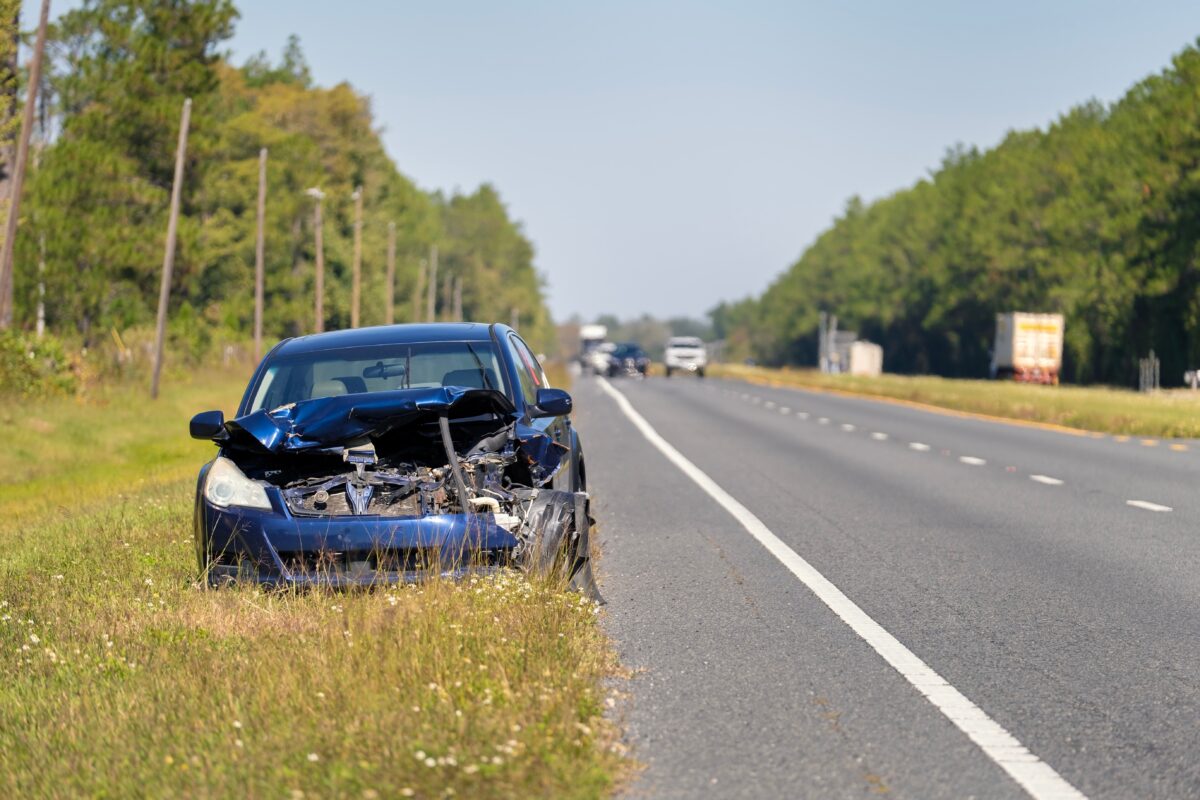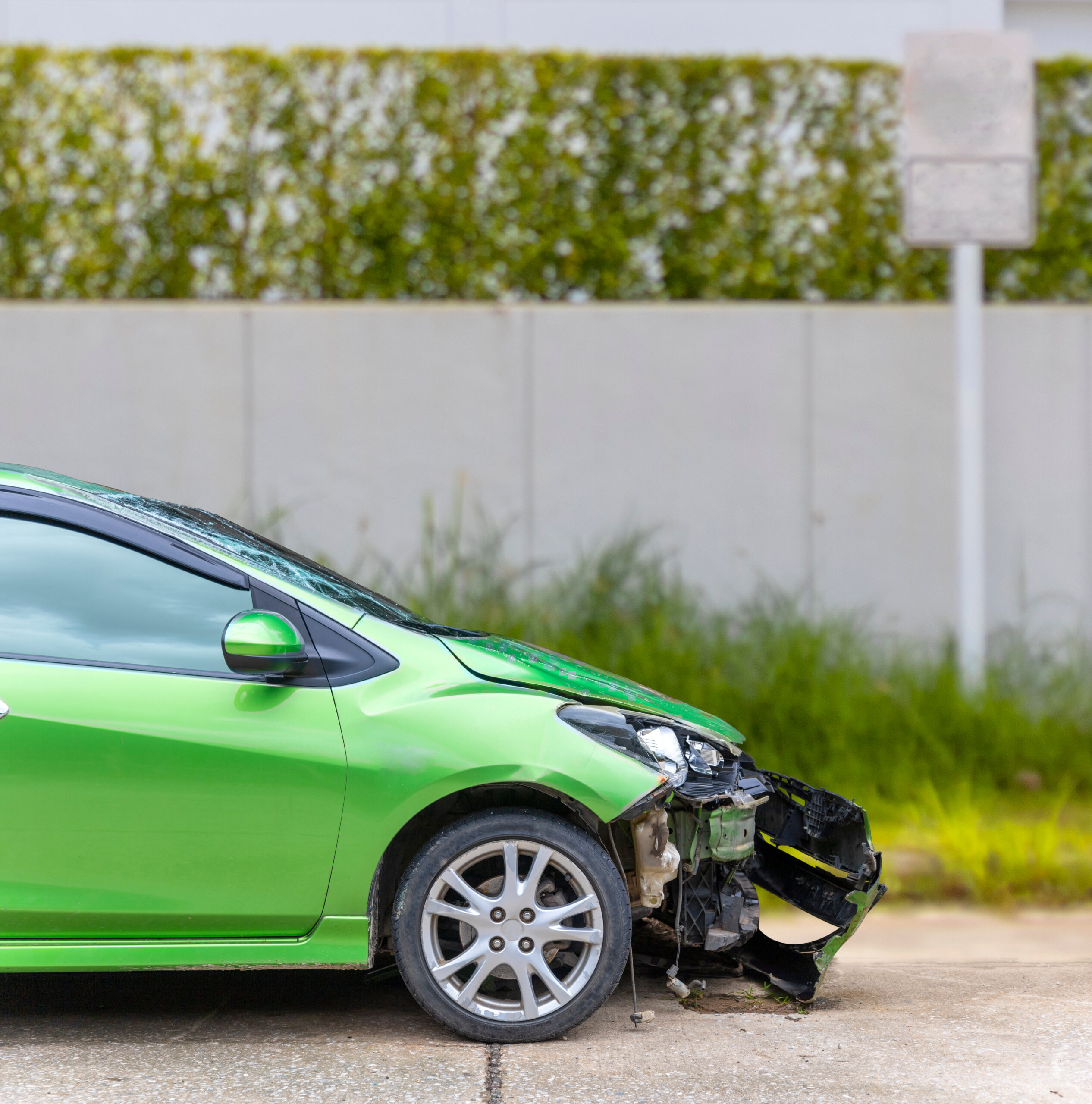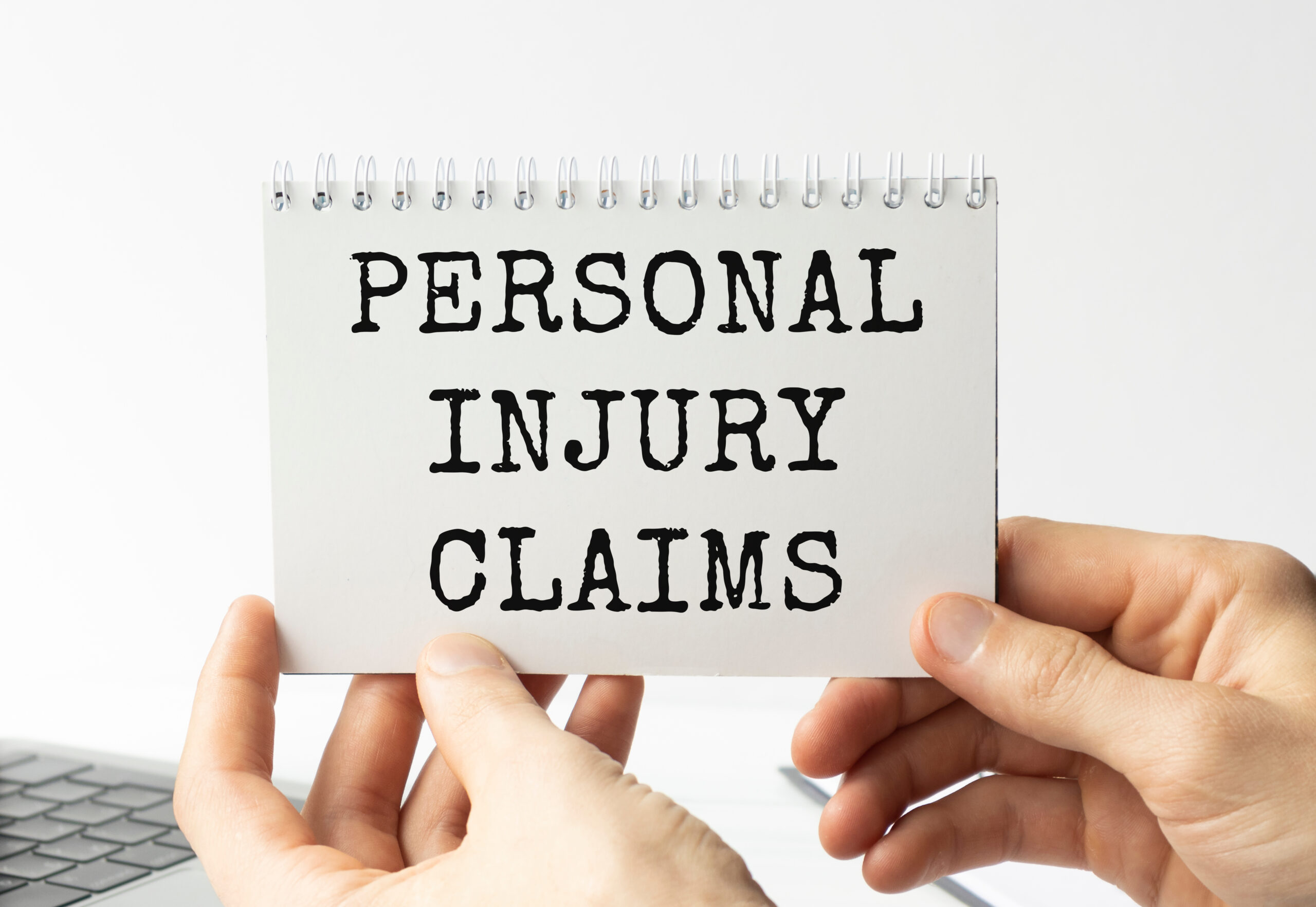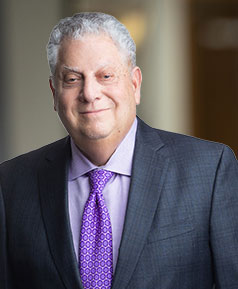- September 30, 2024

Every year, thousands of drivers in Grand Rapids find themselves at the mercy of the city's most dangerous roads.
Just last year, 112 crashes occurred at the intersection of U.S. 131 and Wealthy Street alone—earning it the notorious title of the most hazardous spot in Kent County. Unfortunately, some of these accidents are life-altering events that leave victims grappling with physical, emotional, and financial turmoil.
In this guide, we’ll go over the shocking car accident statistics in Grand Rapids, and what you can do if you’ve suffered injuries from such an accident.
If you or a loved one has suffered injuries from a car accident in one of these high-risk areas, you don’t have to face the aftermath alone. Our experienced Grand Rapids car accident attorneys at Goodman Acker are here to help you pursue the justice and compensation you deserve.
Call us today at (616) 333-8302 for a free consultation, and let us fight for your rights.
Contact us online, and let us safeguard your rights and future.
The Deadliest Roads in Grand Rapids: Where Accidents Are Most Likely to Happen
Grand Rapids is a vibrant city, but beneath its bustling surface lies a dangerous reality for drivers. Certain roads and intersections have earned a reputation for being accident hotspots.
U.S. 131 and Wealthy Street: The Epicenter of Accidents
If there's one intersection that every driver in Grand Rapids should be wary of, it's where U.S. 131 meets Wealthy Street. Experts have consistently flagged this intersection as the most dangerous in Kent County.
According to official city data, 112 reported crashes occurred there last year alone. The problem is rooted in the intersection’s design—a short exit ramp, heavy traffic flow, and a tricky left-hand exit that often catches drivers off guard.
This combination makes U.S. 131 and Wealthy Street a prime location for rear-end collisions and side-impact crashes, particularly during peak traffic hours.
Michigan law doesn’t turn a blind eye to such accident-prone areas. Under Michigan Compiled Laws § 257.627, drivers must operate their vehicles at a speed that allows them to stop within an assured clear distance ahead.
However, drivers often violate this in high-traffic zones like U.S. 131 and Wealthy Street, with its frequent and dangerous sudden stops.
28th Street Corridor: A Stretch Lined with Hazards
Another major contributor to the city's accident statistics is the 28th Street Corridor. This thoroughfare is notorious for its high traffic volume, largely due to the concentration of businesses, restaurants, and shopping centers.
Specific sections of 28th Street stand out as particularly hazardous:
- Near Crumble Cookie and Trader Joe’s: This stretch saw 249 crashes over the last five years, largely due to the influx of shoppers and the complex road layout.
- Between Discount Tire and Harvey Automotive: In the same period, 234 more crashes were reported here as drivers navigated the heavy congestion.
- Just east of U.S. 131: This area logged 225 crashes over five years, highlighting the dangers of merging traffic and busy intersections.
Alpine Avenue Northwest: A Dangerous Mix of Commerce and Traffic
Alpine Avenue Northwest, particularly near 4 Mile Road, is another road where accidents are all too frequent. With 253 crashes reported over the last five years, this area just outside Comstock Park is a major concern for local drivers.
Due in part to its proximity to shopping centers and highway ramps, the road's heavy traffic creates a dangerous environment where rear-end collisions and sideswipes are common.
A Statistical Breakdown: Where and How Fatal Accidents Occur in Grand Rapids
Fatal Accidents: A Three-Year Snapshot
The number of fatal accidents in Grand Rapids has varied over the years, but the impact on the community remains deeply felt.

Here’s a breakdown of the statistics from three recent years (sourced from Michigan State Police Traffic Crash Reporting Unit data):
- 2019: There were 15 fatal accidents involving 25 vehicles, resulting in 17 fatalities. Out of these, eight accidents involved drunk persons, and seven involved pedestrians.
- 2018: The city saw 10 fatal accidents with 14 vehicles involved, leading to 12 fatalities. Of these, two accidents involved drunk persons, while four involved pedestrians.
- 2017: This year witnessed 16 fatal accidents involving 23 vehicles, resulting in 16 fatalities. Six of these accidents involved drunk drivers, and eight involved pedestrians, marking a particularly deadly year for those on foot.
EMS Response Times: Minutes Matter
When a serious accident occurs, every second counts.
The average Emergency Medical Services (EMS) response times in Grand Rapids reflect the city’s ability to provide timely assistance to accident victims, which can play a decisive role in survival and recovery:
- 2019: The average EMS response time was 5.4 minutes.
- 2018: Response times remained consistent at 5.4 minutes.
- 2017: The response time was slightly longer, averaging 5.8 minutes.
While these response times are within acceptable ranges, even small delays can have significant consequences, particularly in severe accidents.
Light Conditions: When Fatal Accidents Are Most Likely to Occur
The time of day and lighting conditions significantly affect the likelihood of fatal accidents.
In Grand Rapids, the data reveals a clear pattern:
- 2019: 60% of fatal accidents occurred under dark but lighted conditions, while 33.3% happened during daylight.
- 2017: 31.3% of fatal accidents occurred in dark but lighted conditions, with 50% happening during daylight.
These statistics suggest that while daylight driving is generally safer, most fatal accidents still occur under dark conditions, even when artificial lighting is present.
Demographic Analysis of Accident Victims in Grand Rapids
While accidents can happen to anyone, they tend to disproportionately affect certain age and socioeconomic demographics and the mode of transportation they use:
- Younger Drivers: Data from the National Highway Traffic Safety Administration (NHTSA) consistently shows that drivers aged 16 to 19 are almost three times more likely to be involved in a fatal crash compared to drivers aged 20 and older. This group’s inexperience behind the wheel often leads to a higher incidence of errors, such as misjudging distances or reacting too slowly to sudden changes in traffic conditions.
- Low-Income Residents: For many, the reliance on older, less reliable vehicles and the need to navigate around town can lead to a higher likelihood of accidents. Additionally, these residents may live in neighborhoods with less pedestrian-friendly infrastructure, increasing the risk of a pedestrian accident.
- Pedestrians and Cyclists: Despite making up a smaller percentage of the population, these individuals are disproportionately represented in traffic fatality statistics. In 2019 alone, seven of the 17 traffic fatalities in Grand Rapids involved pedestrians. This trend is consistent with national data from the Centers for Disease Control and Prevention (CDC), which shows that pedestrians are 1.5 times more likely than passenger vehicle occupants to be killed in a car crash per trip.
- Elderly Drivers (over 65 years old): As drivers age, they often experience a decline in reaction time, vision, and cognitive abilities, making them more susceptible to accidents, especially in complex traffic situations.
Overall Crashes in Kent County: A Broader Perspective
To understand the full scope of traffic accidents in the region, it's important to consider the data from Kent County, which includes Grand Rapids. In one recent year, Kent County experienced nearly 20,100 accidents, with 66 fatalities reported.
Legal Recourse for Car Accident Victims in Michigan
No-Fault Insurance
Michigan’s No-Fault Insurance law ensures that all parties involved in an accident receive immediate benefits regardless of who is at fault.
Every vehicle owner must carry no-fault insurance, which covers three primary areas:
- Personal Injury Protection (PIP) Benefits: PIP benefits cover medical expenses, wage loss, and other costs related to your recovery, regardless of fault. This means that even if you are responsible for the accident, your insurance will still cover your medical bills and a portion of your lost wages.
- Property Protection (PPI) Benefits: PPI covers damage your vehicle may cause to other people’s property, such as buildings, fences, or legally parked cars. However, it does not cover damage to other vehicles in a collision.
- Residual Liability Insurance Coverage: While no-fault insurance is designed to minimize lawsuits, you can still file a lawsuit in certain circumstances, such as if the victim dies (in which case the family can file a lawsuit) or suffers serious injuries from the accident, or if the damages exceed the coverage limits of the no-fault insurance.
Filing a Personal Injury Claim

While Michigan’s No-Fault Insurance provides essential coverage, it doesn’t always cover the full extent of your damages—especially in severe accidents. If your injuries meet the threshold for a serious impairment of body function, permanent serious disfigurement, or death, you may file a personal injury lawsuit against the at-fault driver.
In such cases, you can seek compensation for pain and suffering, which PIP benefits does not cover. Additionally, if your medical expenses exceed the limits of your PIP coverage, or if you have opted for lower PIP limits, a personal injury claim can help recover those excess costs.
The Importance of Legal Representation
Michigan's no-fault insurance system is complex, and the potential for additional personal injury claims further complicates matters. This complexity underscores the value of experienced legal representation.
A qualified car accident attorney provides several crucial services:
- Navigating the Claims Process: They guide you through the intricacies of filing claims and meeting legal requirements.
- Negotiating with Insurance Companies: Attorneys use their expertise to advocate for your interests when dealing with insurers.
- Maximizing Compensation: They work to ensure you receive the full compensation you're entitled to under the law.
Beyond these core legal functions, an attorney also offers practical support in managing the financial aftermath of an accident.
This includes:

- Addressing medical bills
- Accounting for lost wages
- Mitigating other financial challenges resulting from the accident
Should your case proceed to trial, your attorney will provide courtroom representation, presenting your case effectively before a judge or jury.
Statute of Limitations
In Michigan, the statute of limitations for filing a car accident lawsuit is three years from the accident date. If you’re filing a claim for vehicle damage or other property losses, the statute of limitations may be shorter depending on circumstances, often just one year.
Missing the deadline results in the forfeiture of your right to seek compensation, regardless of the severity of your injuries or the extent of your damages.
What to Expect During the Legal Process: From Consultation to Resolution
- Initial Consultation: This is your first meeting with an attorney, where you’ll discuss the details of your accident, your injuries, and your legal options. Most personal injury attorneys offer free consultations, and this meeting is an opportunity to evaluate whether the attorney is the right fit for your case.
- Investigation and Evidence Gathering: Your attorney will conduct a thorough investigation of the accident, gather evidence, and possibly consult with experts to build a strong case.
- Filing the Claim: Once your attorney has gathered sufficient evidence, they will file the necessary legal documents to initiate your claim. This includes notifying the insurance companies involved and, if necessary, filing a lawsuit.
- Negotiation and Settlement: Many car accident claims are resolved through negotiation, where your attorney will work to secure a fair settlement from the insurance company. If all parties reach a settlement, the case ends here.
- Trial: If all parties cannot agree on a settlement, your case may go to trial. Here, your attorney will present your case before a judge or jury, who will decide the outcome.
We’re Here to Help

So, after exploring these dangerous hotspots and the complexities of Michigan's legal landscape, here’s the most important question: If you or a loved one has suffered injuries from a car accident in Grand Rapids, are you prepared to take the necessary steps to protect your rights and get the compensation you deserve?
If you're unsure, don't wait until it's too late. Contact our Grand Rapids personal injury lawyers today at (616) 333-8302 for a free consultation, and let us help you secure the justice and compensation you deserve.

